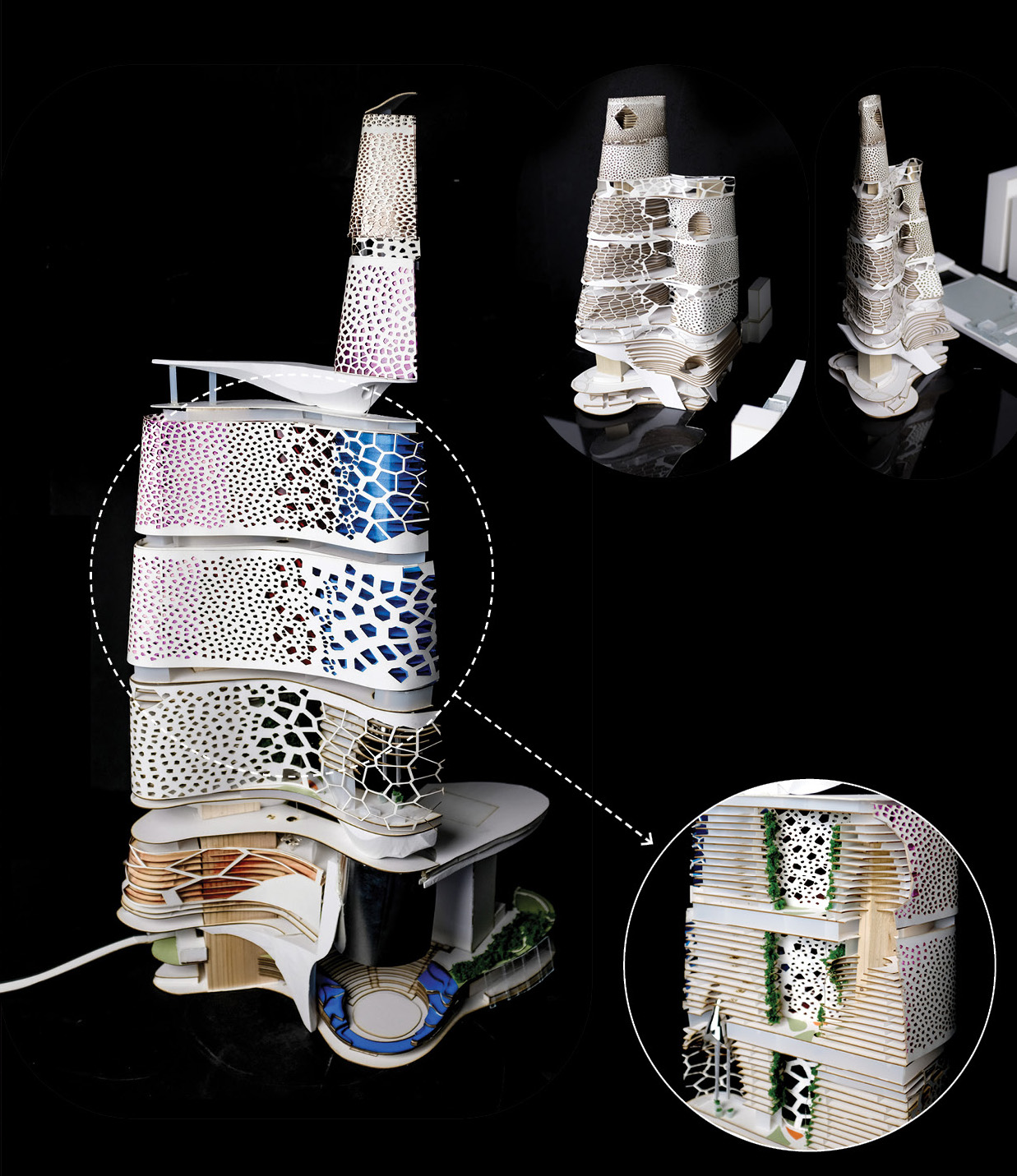Eco-Harmony
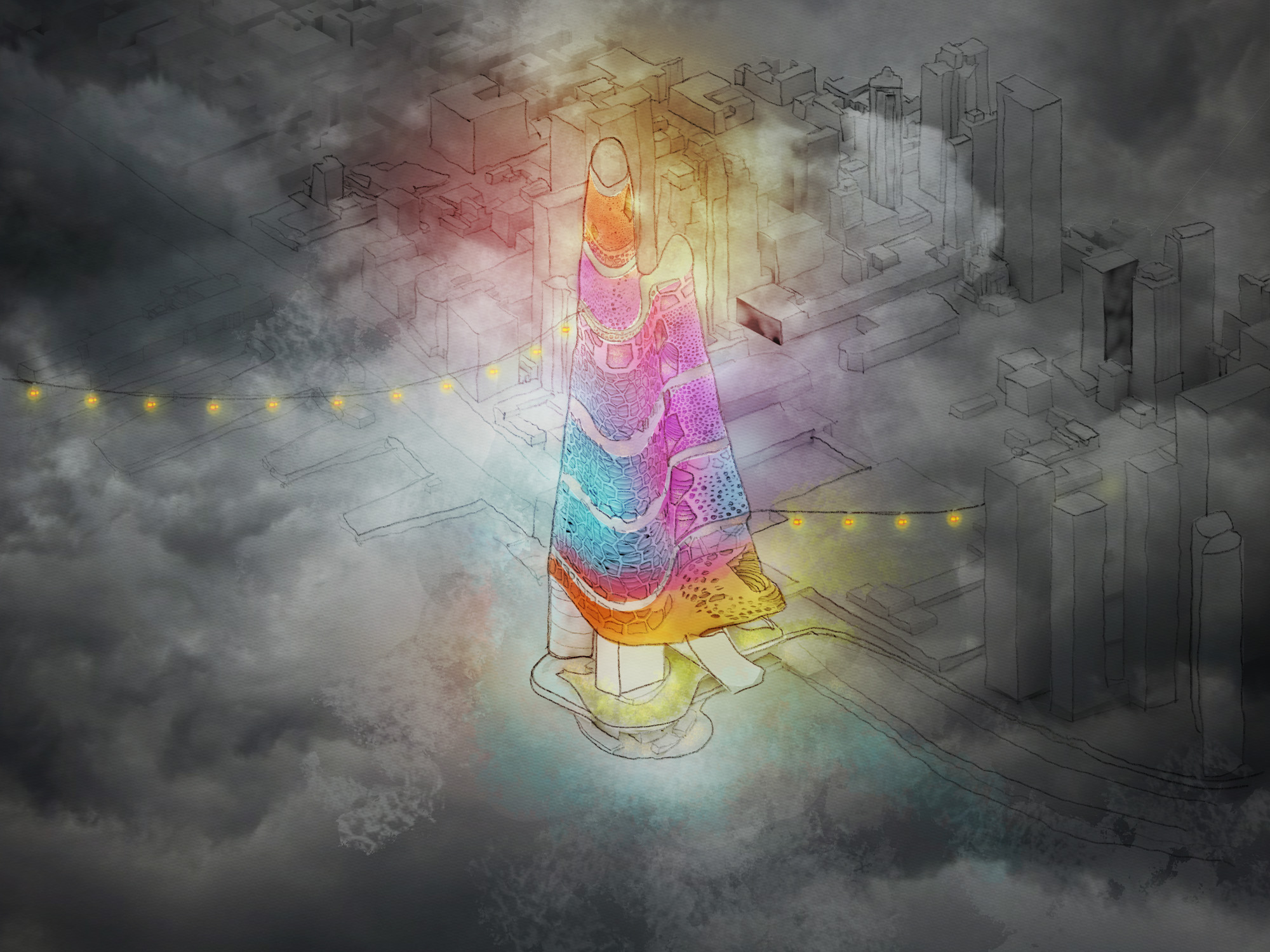
What are megastructures of the future and how can it become a self-sustaining structure that embodies the idea of “mixed use”?
This 7 million square feet project located on Pier 76 in New York City explores the integration of city infrastructure with mixed use programs (such as hotel, education, residential, etc) and how sustainable synergies can arise from the various programs that are embedded within one singular megastructure.
In 100 years in the future, with advanced technologies and extreme climate conditions (based on current climate trajectories), how can architecture transform into towers of ecological collaboration and celebration?


The project proposes a daring transit connection that involve the use of gondolas that could connect the site to Penn Station and New Jersey, creating bridges that would greatly increase the connectivity and modes of transportation on site, as well as provide a new perspective for Hudson Yards and New York City as a whole.
This only highlights one of the many transportation strategies embedded within this project. Since the project is situated for 100 years into the future, we explore transportation research development such as Uber Air and Uber Water as new modes of transit that could exist in the future.
The site also directly connects to the Highline and the Javits Center, allowing for the highline to end in a grand way while improving the overall pedestrian circulation of the area (as the multi-lane vehicular roads greatly limit pedestrian circulation around the site).
This only highlights one of the many transportation strategies embedded within this project. Since the project is situated for 100 years into the future, we explore transportation research development such as Uber Air and Uber Water as new modes of transit that could exist in the future.
The site also directly connects to the Highline and the Javits Center, allowing for the highline to end in a grand way while improving the overall pedestrian circulation of the area (as the multi-lane vehicular roads greatly limit pedestrian circulation around the site).

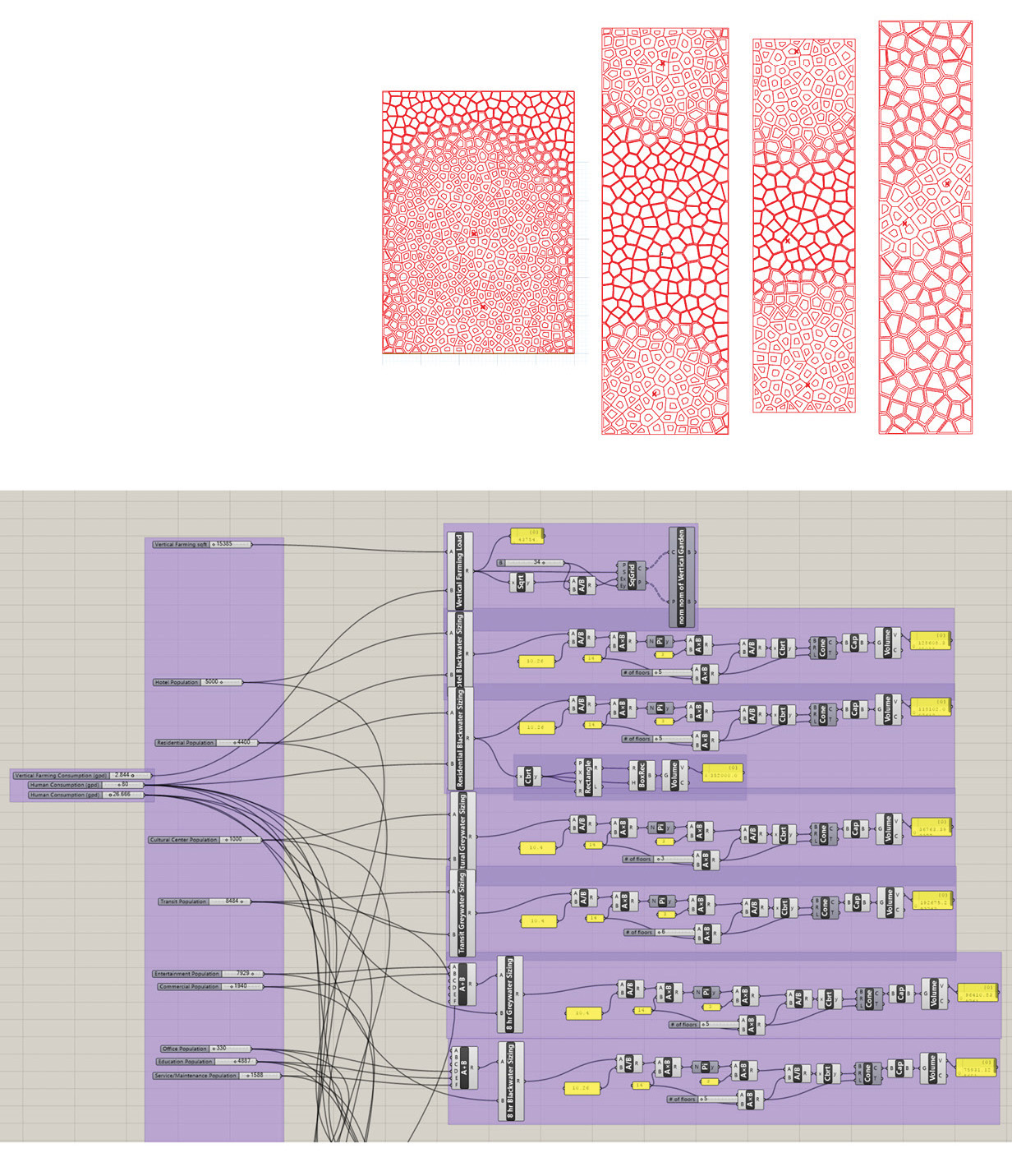
Parametric Scripting
Parametric scripting was utilized for systems sizing calculations (such as in the greywater treatment system sizing) and for facade design in the final project to create varied facade openings based on the program type within the building. This provided the level of variation and transition that could be more responsive to the interior while managing such a large scale building with complex geometries.
The facade design was inspired by a sea sponge, which could filter water and offer porosity. For the facade we wanted to explore air filtration and porosity as a way to undulate the aperture sizing based on the internal programs of the superstructure. For more private spaces such as residential or hotel, the aperture size becomes smaller and closer to human scale, where in larger public spaces the apertures enlarge to much bigger sizes. There is also color control embedded into the glass facade to allow for the glass to adapt based on context (such as pink light for greenhouse spaces for plant growth).
For systems sizing calculations, the graywater and blackwater systems included both the superstructure load as well as the surrounding contexts (such as the Javits Center and Hudson Yards). This allows for the water in the surrounding area and on site to be treated and reused, and are embedded into the architecture as educational and experiential features that encourage a symbiotic relationship between infrastructural systems and living.
The reused water is used for watering plants, landscaping, and flushing throughout the building as large urban farming atriums are created as both social spaces and to deal with food scarcity and food quality.
Parametric scripting was utilized for systems sizing calculations (such as in the greywater treatment system sizing) and for facade design in the final project to create varied facade openings based on the program type within the building. This provided the level of variation and transition that could be more responsive to the interior while managing such a large scale building with complex geometries.
The facade design was inspired by a sea sponge, which could filter water and offer porosity. For the facade we wanted to explore air filtration and porosity as a way to undulate the aperture sizing based on the internal programs of the superstructure. For more private spaces such as residential or hotel, the aperture size becomes smaller and closer to human scale, where in larger public spaces the apertures enlarge to much bigger sizes. There is also color control embedded into the glass facade to allow for the glass to adapt based on context (such as pink light for greenhouse spaces for plant growth).
For systems sizing calculations, the graywater and blackwater systems included both the superstructure load as well as the surrounding contexts (such as the Javits Center and Hudson Yards). This allows for the water in the surrounding area and on site to be treated and reused, and are embedded into the architecture as educational and experiential features that encourage a symbiotic relationship between infrastructural systems and living.
The reused water is used for watering plants, landscaping, and flushing throughout the building as large urban farming atriums are created as both social spaces and to deal with food scarcity and food quality.
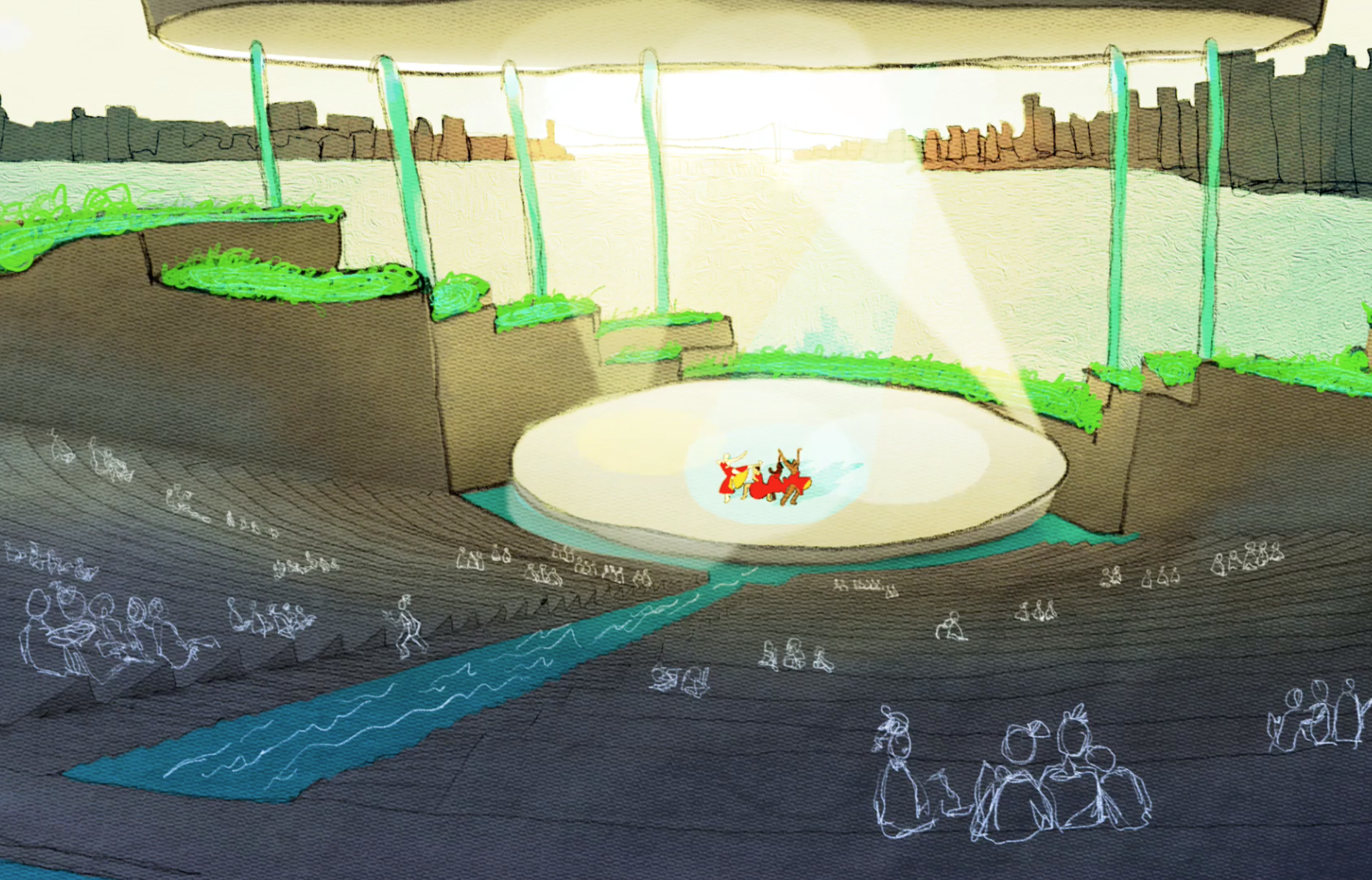




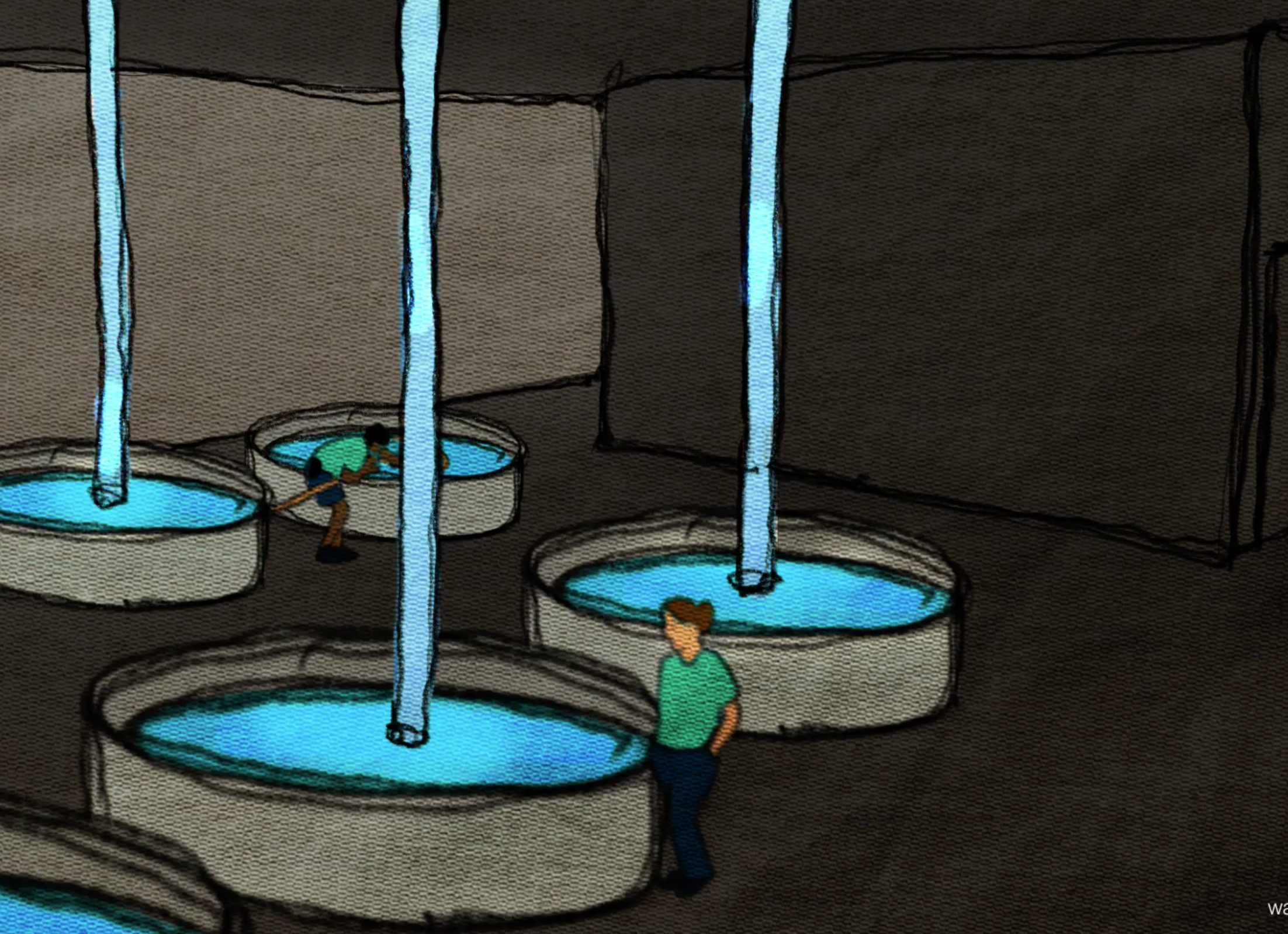
A series of experiential moments present themselves in this project that highlight and celebrate systems integration, experience, social interaction, and ecology.
From an amphitheater that is surrounded by a wet landscape and water to urban farming atriums, the intersection of the systems, programs, ecology, and people were especially important and valuable for this project.
From an amphitheater that is surrounded by a wet landscape and water to urban farming atriums, the intersection of the systems, programs, ecology, and people were especially important and valuable for this project.
This results in a beautiful and sustainable megastructure that integrates system thinking, promotes sustainable living and community experiences, and also integrates into the megascale contexts of the New York Hudson Yards and Javits Center.
